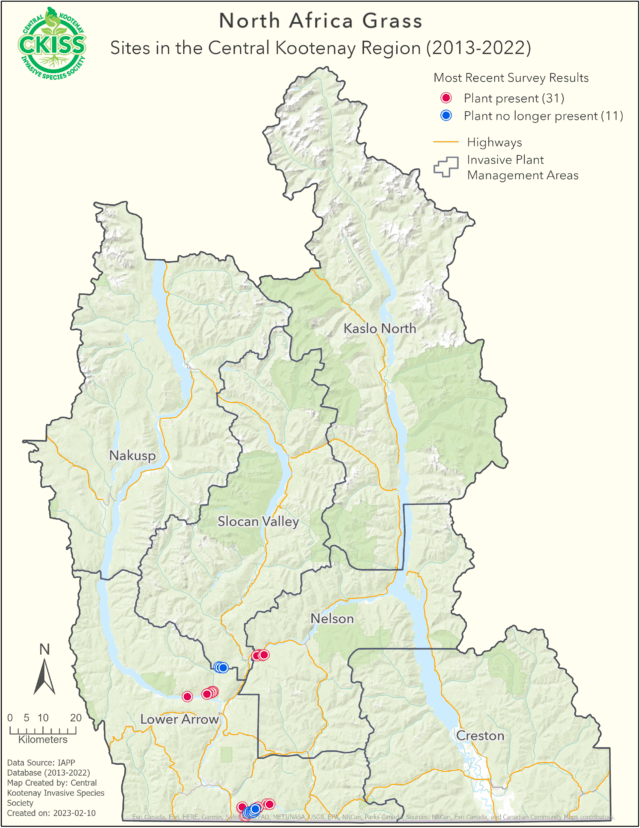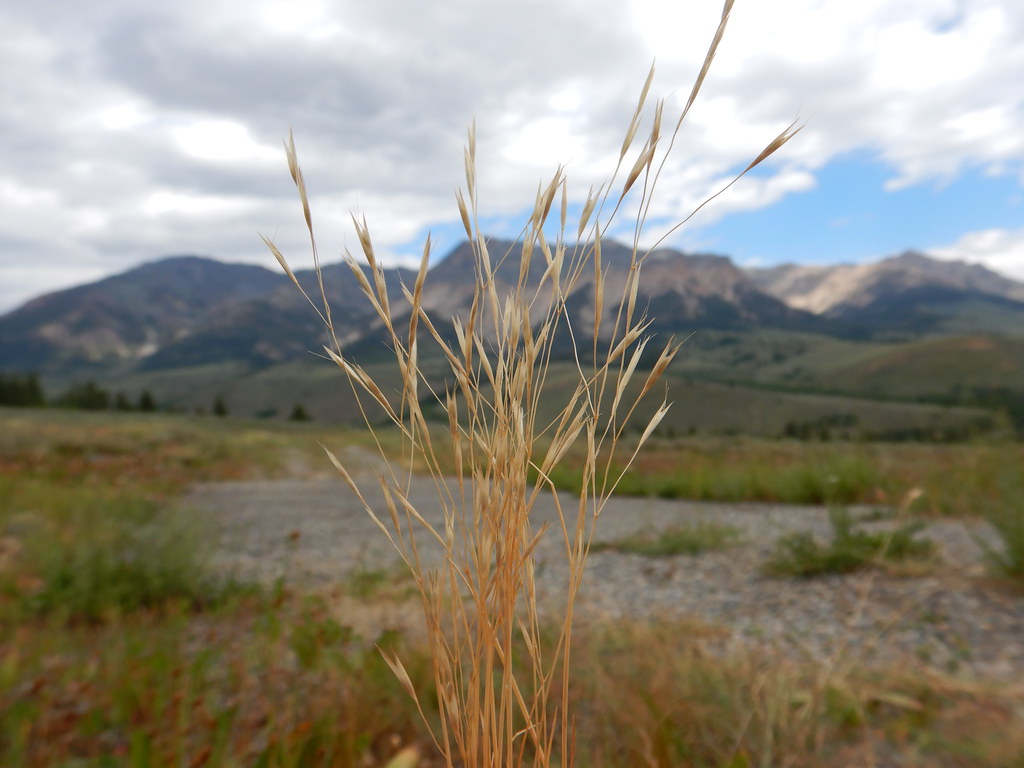Ventenata dubia
Description
- Winter annual grass that grows 10-45 cm tall
- Stems are long, thin, wiry, and branching
- Leaves are narrow, smooth-edged, and occur mainly on the lower half of stems
- Young plants (May/June) are green, have reddish-black nodes, long ligules, and shallow roots
- Mature plants (June/July) are silvery/green, erect, have smooth-like stems, and an open panicle
- Senesced plants (July/August) have straight lower awns and twisted/bent upper awns
- Grows in open, disturbed areas typically below 1800 m elevation
(e.g., grasslands, rangelands, roadsides, rail lines, dry forests, and riparian areas)
Introduction and spread
- Native to north Africa, south-central Europe, south Russia, and west Asia
- Confirmed in BC in the West and Central Kootenays, Boundary, Metro Vancouver, and Nanaimo
- Spreads by seed with 15-35 seeds/plant
- Seeds are viable for at least 3 years
- Seeds disperse by contaminated hay and grass seed mixes, machinery, vehicles, humans, and animals
- Can re-produce inflorescence in the same year if cut or grazed
Consequences of invasion
- Displaces native grasses and forbs, altering the plant community and reducing biodiversity
- Degrades grassland habitats
- Reduces forage for wildlife and livestock
- Reduces agricultural yields
- Increases soil erosion
Status in the CKISS region
- North Africa grass is classified as Eradicate on the CKISS Annual Priority List.

- It is present in the CKISS region at a very limited distribution, so eradication is the management goal.
- Please report sightings of this species immediately!
- To learn more about how CKISS classifies and manages invasive species, see our Invasive Species Priority Lists page.
Integrated pest management options
Prevention
- Learn to identify this plant and report any sightings!
- Immediately revegetate bare, disturbed soils with a non-invasive seed mix to reduce invasion.
- Maintain a diverse, healthy native plant community to discourage invasion.
- Do not move contaminated soils to a new area.
- Clean your clothing, boots, vehicles, gear, and pets before entering/leaving an area.
Mechanical control
- Hand-pull small infestations before seed set.
- Mowing can be effective before seed set and before soils dry out.
Chemical control
- Herbicides labeled for Ventenata management can be effective, but requires proper administration, timing, and possibly follow-up treatments.
Cultural control
- Prescribed burns do NOT appear to be an effective control measure
Additional resources
- North Africa grass | BC Invasive Species Alert
- North Africa grass | Okanagan Invasive Species Online
- North Africa grass | Fraser Valley Invasive Species Society
- North Africa grass | University of Nebraska-Lincoln









